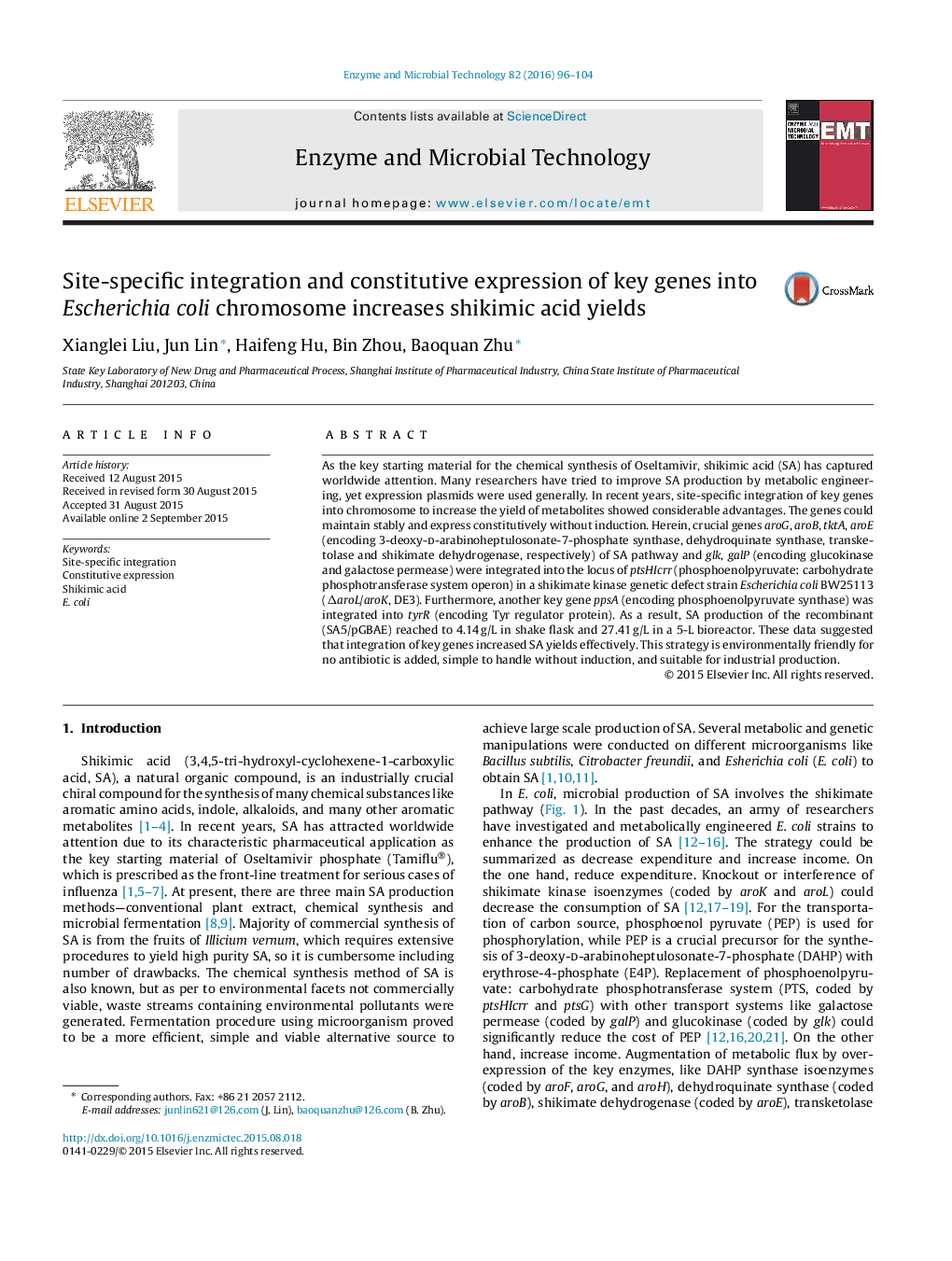| Article ID | Journal | Published Year | Pages | File Type |
|---|---|---|---|---|
| 16901 | Enzyme and Microbial Technology | 2016 | 9 Pages |
•Site-specific integration of genes aroG, aroB, tktA and aroE at ptsHIcrr.•Another key gene ppsA was integrated at tyrR.•The genes could maintain stably and express constitutively without IPTG induction.•Improvement of SA production and productivity using glucose–glycerol mixture.
As the key starting material for the chemical synthesis of Oseltamivir, shikimic acid (SA) has captured worldwide attention. Many researchers have tried to improve SA production by metabolic engineering, yet expression plasmids were used generally. In recent years, site-specific integration of key genes into chromosome to increase the yield of metabolites showed considerable advantages. The genes could maintain stably and express constitutively without induction. Herein, crucial genes aroG, aroB, tktA, aroE (encoding 3-deoxy-d-arabinoheptulosonate-7-phosphate synthase, dehydroquinate synthase, transketolase and shikimate dehydrogenase, respectively) of SA pathway and glk, galP (encoding glucokinase and galactose permease) were integrated into the locus of ptsHIcrr (phosphoenolpyruvate: carbohydrate phosphotransferase system operon) in a shikimate kinase genetic defect strain Escherichia coli BW25113 (ΔaroL/aroK, DE3). Furthermore, another key gene ppsA (encoding phosphoenolpyruvate synthase) was integrated into tyrR (encoding Tyr regulator protein). As a result, SA production of the recombinant (SA5/pGBAE) reached to 4.14 g/L in shake flask and 27.41 g/L in a 5-L bioreactor. These data suggested that integration of key genes increased SA yields effectively. This strategy is environmentally friendly for no antibiotic is added, simple to handle without induction, and suitable for industrial production.
